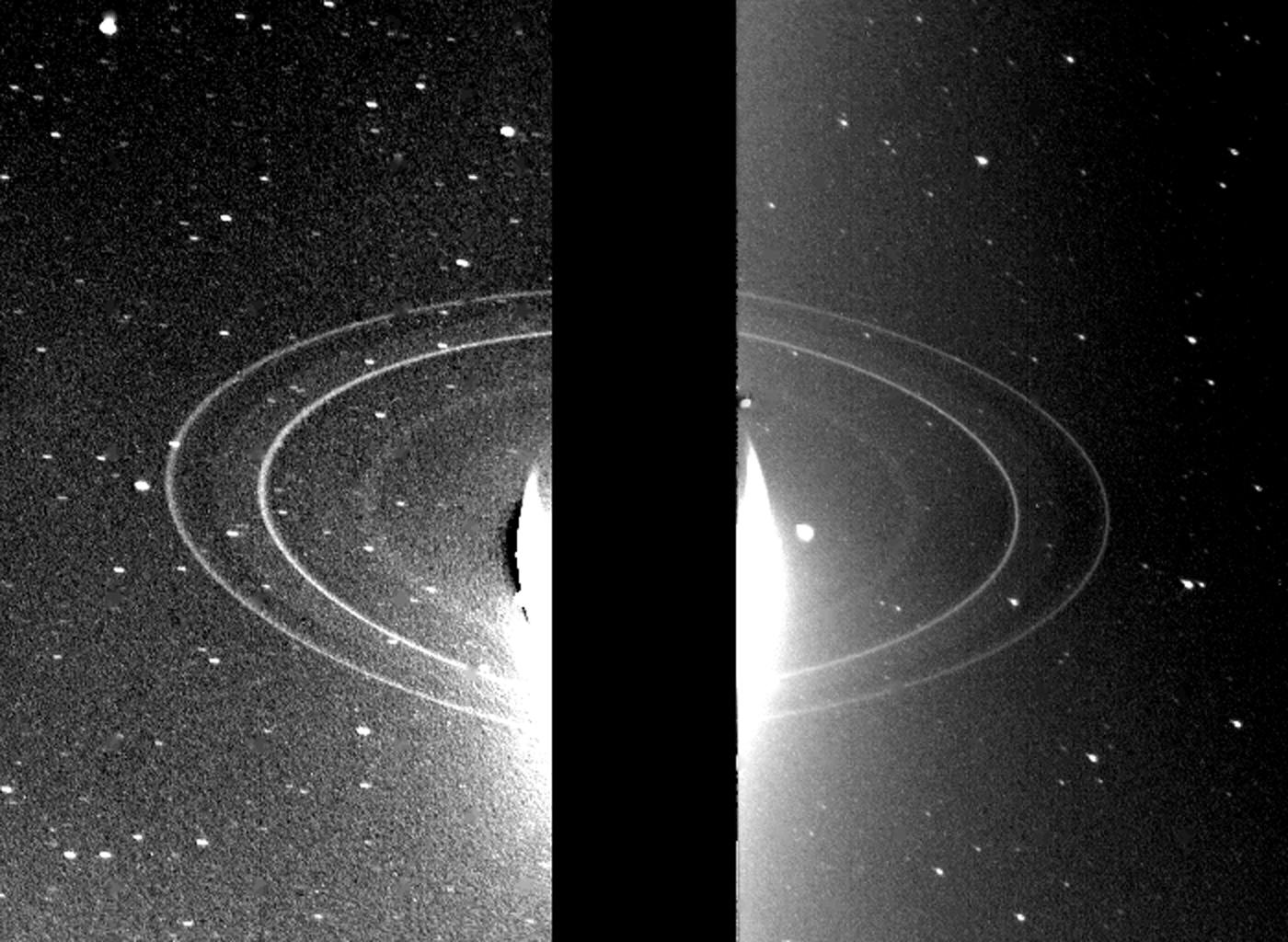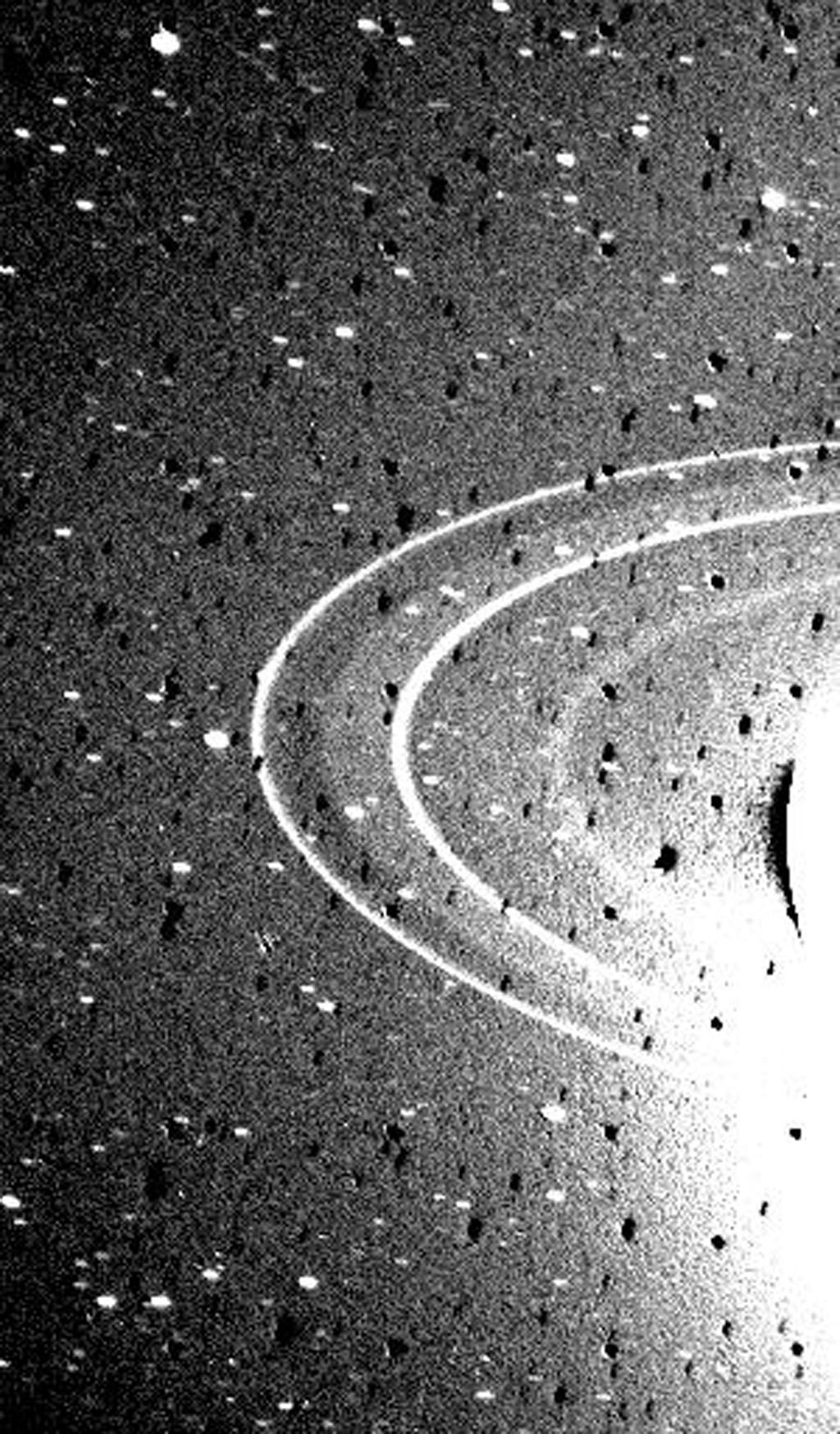

el dispensador dice: ¿sabes?, los universos se caracterizan por dos constantes... las esferas... los anillos... un orden orbital magistral donde todo se sostiene a sí mismo, sin que necesites involucrarte, y sin que necesites pensar en ello... y más aún, que conserva su orden sin que te enteres... dando por supuesto que "todo está allí", y "está bien que así sea"... ya que tu te debes a ti mismo, ya que para eso has nacido portador de una gracia, de un don, de un talento... al menos de uno de ellos, o quizás más... tu motivo es sólo tuyo y de nadie más...
¿sabes?, además, los universos se caracterizan por otras dos constantes... los paralelos simultáneos intangibles, inaccesible a los sentidos atrapados por lo denso... una música constante que identifica a la "música de las esferas", inaudible desde la Tierra y también desde el espacio, no así desde ciertas geometrías acondicionadas a los ritmos y los acordes que llevan y traen mareas de energías, al modo de un océano sin confines, que fluye de un extremo al otro de manera armónica para honrar la creación y su verbo... recuerda siempre que el verbo se autopronuncia, y que gracias a él, todo existe, incluyéndote...
¿sabes?, hay más... es más lo invisible que lo tangible... y mientras la música de las esferas se sostiene en un pentagrama inaccesible a las segundas intenciones, las mezquindades y las otras miserias que caracterizan a la humanidad carente de humanismos, los universos que no ves, e incluso aquel en el que te encuentras, se expanden y se contraen a oleadas de pensamientos que oran por la idea en sostenido...
mientras la idea permanece, el universo lo hace...
mientras la idea permanece, los universos coexisten...
alguien está pensando para que esto se mantenga... en orden... no importa de quién se trate, su misión es "pensar la idea" y hacer que esta prevalezca vigente desde y hacia la eternidad, esa misma eternidad de la que provienes, esa misma eternidad hacia la que te diriges...
vienes y vas, sin darte cuenta...
entonces, cada astro cumple un rol específico y determinado... entonces cada energía conserva la traza de un zodíaco... que se corresponde con un momento... que se procesa bajo una consigna numérica... que porta, a su vez, un sello, o más de un sello... que nada tienen que ver con tu nombre, ni con tu raza, ni con tu género, sino con el motivo que tienes como consigna concedida para un determinado lapso...
en dicho concierto, no es lo mismo un planeta sin anillos que otro con anillos...
los anillos hacen una dramática diferencia... protegiendo una realidad a la que no puedes acceder, y aún haciéndolo, te impedirá percibirla en su exacta dimensión multifacética... más allá de los violetas o más acá de los rojos... dicha realidad, existiendo, no lo hará para ti ni para quien pretenda inmiscuirse en una vibración a la que no pertenece...
Júpiter tiene anillos invisibles...
Saturno tiene anillos visibles...
Urano tiene anillos imperceptibles que se manifiestan por momentos, permaneciendo ocultos la mayoría de las veces...
pero, Neptuno también tiene anillos, fantasmales... según donde te pares puedes o no verlos... confusión para almas inquietas y de tanto, alteradas... anillos que se esfuman para seguir estando... anillos que se distorsionan para permanecer intactos... en definitiva, anillos protectores de curiosos y desesperados por pretender lo ajeno...
como puedes ver, hay una importancia singular en las esferas y sus músicas... ya que aún en sus antípodas, todas responden a la misma música... inaudibles desde la Tierra carente de anillos... inaudibles desde la superficie de Venus o de Marte... inaudible desde Mercurio donde la música solar y su gemela estelar, impiden que la atención se manifieste...
¿cómo oyen aquellos que no tienen oídos?...
¿cómo ven aquellos rostros que carecen de ojos?...
¿cómo respiran aquellos que no tienen aire?...
¿cómo beben aquellos que teniendo sed carecen de fuentes y sus aguas?...
piénsalo, búscalo en tus sueños... el conocimiento es necesario para desprenderse de la densidad de los egos...
entonces... ¿cómo pintan y hacen arte aquellos que carecen de manos y de un cuerpo?...
o bien... ¿cómo escriben y hacen letras aquellos que no tienen manos para desarrollar una caligrafía?...
la pregunta retumba en los universos presentes y contiguos... la respuesta es personal... no hay constantes por fuera del deseo pretendido...
si ves a Neptuno no podrás ver sus anillos... si ves sus anillos, Neptuno se tornará incandescente... cegándote...
como siempre, las preguntas superan a cualquier respuesta... obligándote a escalar tu alma... justo allí, donde comienza la minúscula "música de las esferas". MAYO 25, 2018.-
moraleja: no desprecies lo que no ves, porque aún no viéndolo, existe.

Space Images | Neptune's Rings

This wide-angle Voyager 2 image, taken through the camera's clear filter, is the first to show Neptune's rings in detail. The two main rings, about 53,000 km (33,000 miles) and 63,000 km (39,000 miles) from Neptune, are 5 to 10 times brighter than in earlier images. The difference is due to lighting and viewing geometry. In approach images, the rings were seen in light scattered backward toward the spacecraft at a 15-degree phase angle. However, this image was taken at a 135-degree phase angle as Voyager left the planet. That geometry is ideal for detecting microscopic particles that forward-scatter light preferentially. The fact that Neptune's rings are so much brighter at that angle means the particle-size distribution is quite different from most of Uranus' and Saturn's rings, which contain fewer dust-size grains. However, a few components of the Saturnian and Uranian ring systems exhibit forward-scattering behavior: The F ring and the Encke Gap ringlet at Saturn, and 1986U1R at Uranus. They are also narrow, clumpy ringlets with kinks, and are associated with nearby moonlets too small to detect directly. In this image, the main clumpy arc, composed of three features each about 6 to 8 degrees long, is clearly seen. This image was obtained when Voyager was 1.1 million km (683,000 miles) from Neptune. Exposure time was 111seconds. The Voyager Mission is conducted by JPL for NASA's Office of Space Science and Applications.

These two 591-second exposures of the rings of Neptune were taken with the clear filter by the Voyager 2 wide-angle camera on Aug. 26, 1989 from a distance of 280,000 kilometers (175,000 miles). The two main rings are clearly visible and appear complete over the region imaged. The time between exposures was one hour and 27 minutes. [During this period the bright ring arcs in the outer bright ring were not visible in either picture (they were unfortunately on the opposite side of the planet for each exposure).] Also visible in this image is the inner faint ring at about 42,000 kilometers (25,000 miles) from the center of Neptune, and the faint band which extends smoothly from the 53,000 kilometer (33,000 miles) ring to roughly halfway between the two bright rings. Both of these newly discovered rings are broad and much fainter than the two narrow rings. These long exposure images were taken while the rings were back-lighted by the sun at a phase angle of 135 degrees. This viewing geometry enhances the visibility of dust and allows fainter, dusty parts of the ring to be seen. The bright glare in the center is due to over-exposure of the crescent of Neptune. The two gaps in the upper part of the outer ring in the image on the left are due to blemish removal in the computer processing. Numerous bright stars are evident in the background. Both bright rings have material throughout their entire orbit, and are therefore continuous. The Voyager Mission is conducted by JPL for NASA's Office of Space Science and Applications.
View all Images
This 591-second exposure of the rings of Neptune were taken with the clear filter by the Voyager 2 wide-angle camera. The two main rings are clearly visible and appear complete over the region imaged. Also visible in this image is the inner faint ring and the faint band which extends smoothly from the ring roughly halfway between the two bright rings. Both of these newly discovered rings are broad and much fainter than the two narrow rings. The bright glare is due to over-exposure of the crescent on Neptune. Numerous bright stars are evident in the background. Both bright rings have material throughout their entire orbit, and are therefore continuous. The Voyager Mission is conducted by JPL for NASA's Office of Space Science and Applications.






















No hay comentarios:
Publicar un comentario